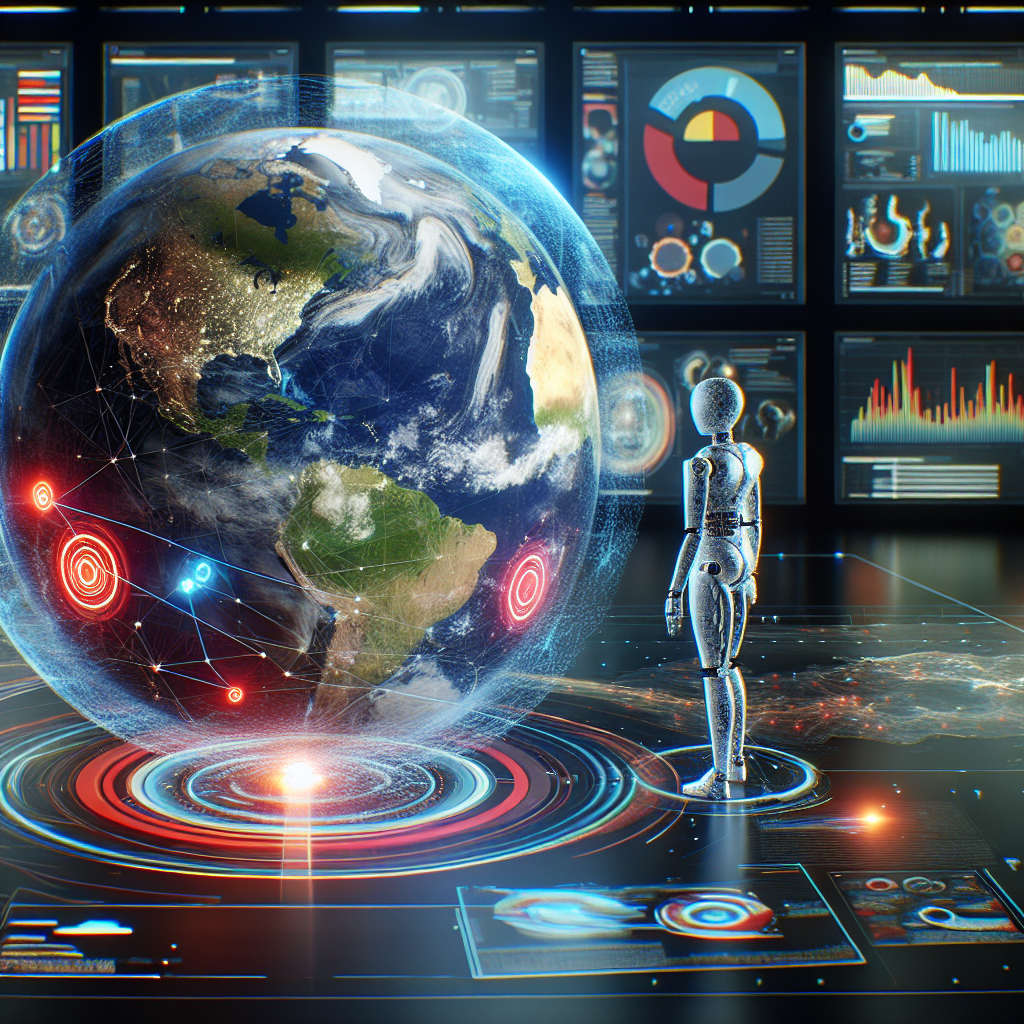In recent years, artificial intelligence (AI) has been making significant strides in various industries, including disaster preparedness. From predicting natural disasters to coordinating emergency response efforts, AI automation is revolutionizing the way we prepare for and respond to crises. In this article, we will explore how AI automation is enhancing disaster preparedness and helping to save lives in the process.
Predicting Natural Disasters
One of the most important aspects of disaster preparedness is the ability to predict when and where a disaster might strike. AI technology is being used to analyze large amounts of data from various sources, such as weather patterns, seismic activity, and satellite imagery, to forecast natural disasters with greater accuracy.
For example, researchers at the University of California, Irvine, have developed an AI system that can predict the likelihood of wildfires in a given area up to six hours in advance. By analyzing historical data on weather conditions, vegetation density, and past fire incidents, the system can help firefighters and emergency responders anticipate where fires are likely to break out and take preventive measures to mitigate their impact.
Similarly, AI-powered algorithms are being used to predict earthquakes and tsunamis by analyzing seismic data in real-time. By detecting subtle changes in the Earth’s crust that precede a seismic event, these algorithms can provide early warnings to residents in at-risk areas, giving them valuable time to evacuate and seek shelter.
Coordinating Emergency Response Efforts
In addition to predicting disasters, AI automation is also being used to coordinate emergency response efforts more effectively. During a crisis, time is of the essence, and every minute counts in saving lives and minimizing damage. AI technology can help streamline communication and decision-making processes, enabling responders to act quickly and efficiently.
For example, in the aftermath of a natural disaster, such as a hurricane or earthquake, AI-powered chatbots can be used to provide real-time updates and information to affected populations. These chatbots can answer common questions, such as where to find shelter, how to access emergency services, and what to do in case of an emergency, relieving pressure on human operators and ensuring that accurate information is disseminated to those in need.
Furthermore, AI algorithms can analyze data from various sources, such as social media posts, emergency calls, and satellite imagery, to identify areas that are most in need of assistance. By prioritizing response efforts based on real-time data, responders can allocate resources more effectively and reach those who are most vulnerable in a timely manner.
Improving Risk Assessment and Mitigation Strategies
Another way in which AI automation is enhancing disaster preparedness is by improving risk assessment and mitigation strategies. By analyzing historical data and simulating various disaster scenarios, AI algorithms can help identify potential vulnerabilities and develop proactive measures to reduce the impact of future disasters.
For example, AI technology is being used to assess the structural integrity of buildings and infrastructure in at-risk areas. By analyzing data on building materials, construction techniques, and environmental factors, AI algorithms can predict which structures are most likely to withstand a disaster and which are at risk of collapse. This information can help city planners and engineers prioritize retrofitting efforts and strengthen critical infrastructure to minimize damage during a crisis.
Moreover, AI automation is also being used to simulate disaster scenarios and test response strategies in a virtual environment. By creating realistic simulations of earthquakes, floods, and other disasters, responders can practice their skills, refine their protocols, and identify areas for improvement before a real event occurs. This proactive approach can help save lives and reduce the overall impact of disasters on communities.
FAQs
Q: How is AI technology being used to predict natural disasters?
A: AI algorithms are being used to analyze large amounts of data from various sources, such as weather patterns, seismic activity, and satellite imagery, to forecast natural disasters with greater accuracy. By detecting subtle changes in the environment that precede a disaster, AI systems can provide early warnings to residents and responders, enabling them to take preventive measures and mitigate the impact of the event.
Q: How can AI automation help coordinate emergency response efforts?
A: AI-powered chatbots can be used to provide real-time updates and information to affected populations during a crisis. These chatbots can answer common questions, prioritize response efforts based on real-time data, and streamline communication between responders and residents, ensuring that accurate information is disseminated quickly and efficiently.
Q: How does AI technology improve risk assessment and mitigation strategies?
A: By analyzing historical data and simulating various disaster scenarios, AI algorithms can help identify potential vulnerabilities and develop proactive measures to reduce the impact of future disasters. From assessing the structural integrity of buildings to simulating disaster scenarios and testing response strategies, AI automation can help communities prepare for and respond to crises more effectively.

